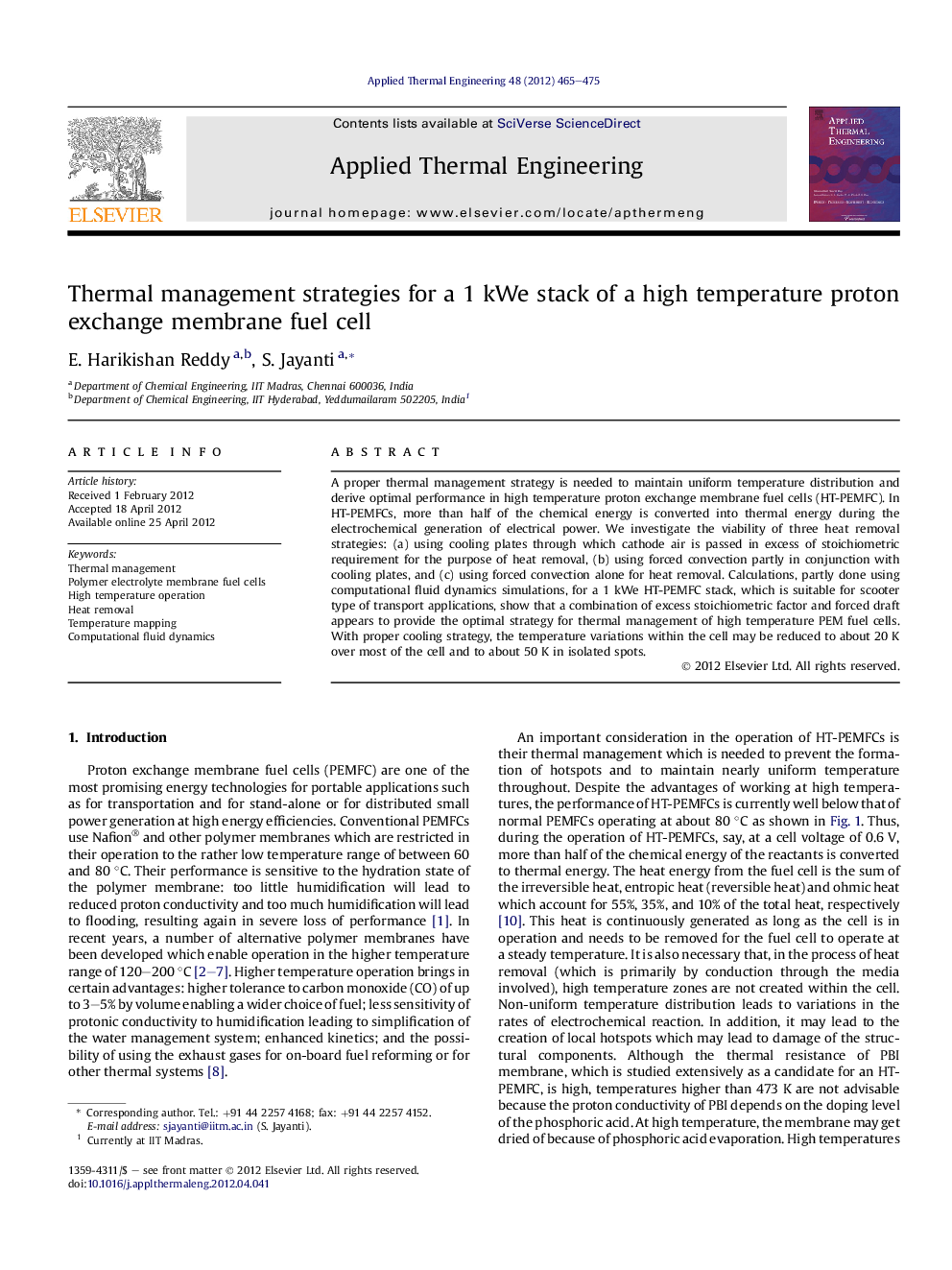| Article ID | Journal | Published Year | Pages | File Type |
|---|---|---|---|---|
| 647076 | Applied Thermal Engineering | 2012 | 11 Pages |
A proper thermal management strategy is needed to maintain uniform temperature distribution and derive optimal performance in high temperature proton exchange membrane fuel cells (HT-PEMFC). In HT-PEMFCs, more than half of the chemical energy is converted into thermal energy during the electrochemical generation of electrical power. We investigate the viability of three heat removal strategies: (a) using cooling plates through which cathode air is passed in excess of stoichiometric requirement for the purpose of heat removal, (b) using forced convection partly in conjunction with cooling plates, and (c) using forced convection alone for heat removal. Calculations, partly done using computational fluid dynamics simulations, for a 1 kWe HT-PEMFC stack, which is suitable for scooter type of transport applications, show that a combination of excess stoichiometric factor and forced draft appears to provide the optimal strategy for thermal management of high temperature PEM fuel cells. With proper cooling strategy, the temperature variations within the cell may be reduced to about 20 K over most of the cell and to about 50 K in isolated spots.
► Estimation of heat removal duty for a high temperature PEM fuel cell stack. ► Use of cathode air to serve also as coolant for the stack. ► Temperature mapping of the cell under various heat removal strategies. ► Identification of optimal thermal management strategy for vehicular applications.
